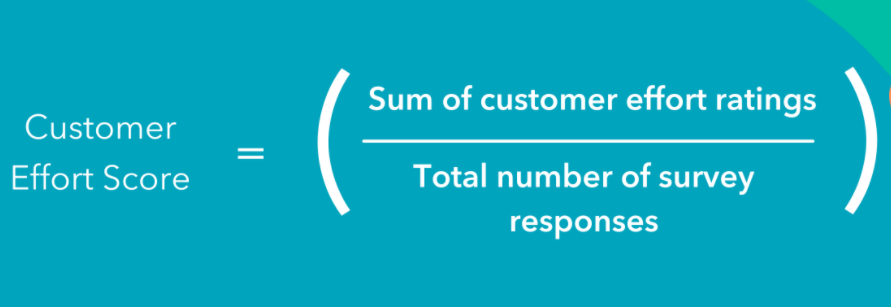In the recent competitive landscape, it is easy for customers to switch to another brand or company if doing business with you becomes inconvenient or difficult to reach out to.
This makes it crucial to know your Customer Effort Score (CES).
What is CES in Customer Experience?
Customer Effort Score (CES) is an important contact center metric derived from a customer satisfaction survey. It helps us know how easy or difficult the customers find it to do business with your company or the brand.
A Customer Effort Score survey reflects the amount of effort a customer has to apply to use a product or service, find the right information they need, or get a problem resolved.
In particular, it asks the customers to rate the amount of effort needed to use your products and services on a scale of “very difficult” to “very easy”. It measures a product or service’s ease of use to customers.
Correlation between CES, NPS, and CSAT
Customer Effort Score (CES) is the only metric that helps measure Customer Satisfaction (CSAT) in a more precise way.
Customer Effort Score and Net Promoter Score in Customer Satisfaction work as addition and in company with each other. They both go hand in hand and come to a conclusion and understand the Customer Satisfaction of your brand and service.
To differentiate CES and NPS:
CES – Customer Effort Score
- This may require multiple-question surveys at each stage of the process to understand the score for different parts of the service.
- It is used for specific touchpoints and interactions along the way.
NPS – Net Promoter Score
- It is asked as a simple one-question survey to the customers and measures how likely they are to promote or recommend your brand and service to others.
- It is used during neutral touchpoints and at the end of the customer’s journey so that it doesn’t trigger the customer’s impression about their last far-reaching interaction.
Why is Customer Effort Score important?
The more effort and time a customer is required to give, the less happy they are and more likely they are to leave.
That makes it very important to measure your customer effort score. It helps your business by having a focus on the current customer journey and catering to their needs. Which in turn makes the overall customer experience better.
By giving the best customer experience, you will have loyal long-term customers invested in your business. Thus, having a strong primary line and the crux of your business sorted.
According to Harvard Business Review, in a business, there are a variety of customers who give a different approach in terms of service and purchase. It makes it essential to measure agent performance and monitor customer satisfaction by an omnichannel platform to give a good customer experience to all.
When is it necessary to Use Customer Effort Score
It is necessary to know when to send out a CES survey. It is always after:
- Purchases or sales interaction
- Delivery
- Online check-in and checkouts
- Customer service interaction (on all channels)
- Service sign-ups and program schedules
- Meeting or consultations
Once the survey is collected and collated, the overall CES is estimated.
What is a Good Customer Effort Score?
There isn’t any standard benchmarking for CES percentage. The lesser amount of effort required by the customer to use your brand or service, the higher is the Customer Effort Percentage.
It is always good to keep the CES percentage as high as possible for far-reaching of the brand and good customer retention. It is considered to be a good CES if it is above 75%.
How do you Measure and Calculate a Customer Effort Score?
For determining the Customer Effort Score, a survey using the 5-point scale method is collected from your customers in the form of star ratings or emoticons.
Here’s an example,
Customer Effort Score can be calculated by first determining the percentage of positive responses (Very easy or easy) and negative responses (Difficult or very difficult). Then, by subtracting the negative responses from the positive responses, you will get your CES score.
The Customer Effort Score can also be calculated by dividing the sum of all customer effort scores by the total number of survey responses. This result will amount to an average effort your customers put in while they interconnect with your business.
How do you reduce or improve Customer Effort Scores?
- Predict customer’s follow-up questions, and address them in a dynamic way.
- Use self-service tools like enabling chatbots and make self-serving easy to understand and operate for a faster resolution for simple queries.
- Train the representatives to steer the idealistic side of the business. Since a well-trained agent would improve customer satisfaction by providing quick and correct detailed responses.
- Collect feedback from both – customers and the representatives.
- High employee effort = High customer effort, so reduce the employee effort and empower the team to solve the problem adequately in a smarter way.
- Reduce wait time and hold time.
Have a good customer service management system and software that helps give a faster resolution to the customer and also reduces the customer effort required.
About the Author | |
 | Shreeja C S |
| A professional blogger and a business writer, who specializes in various real-time industries and their research. A social worker and an aspiring engineer & business student from Manchester, United Kingdom. | |
,
,
,
,
,
,
,
,
,
,
,
,
,










